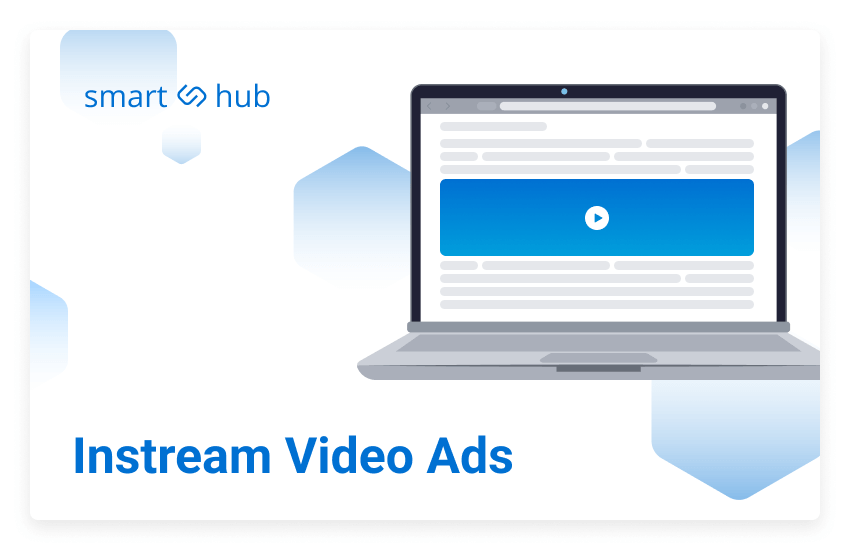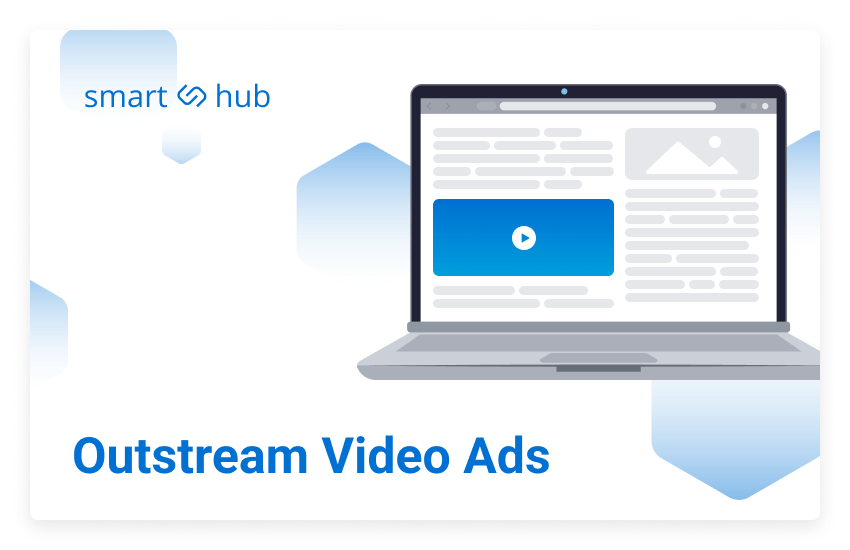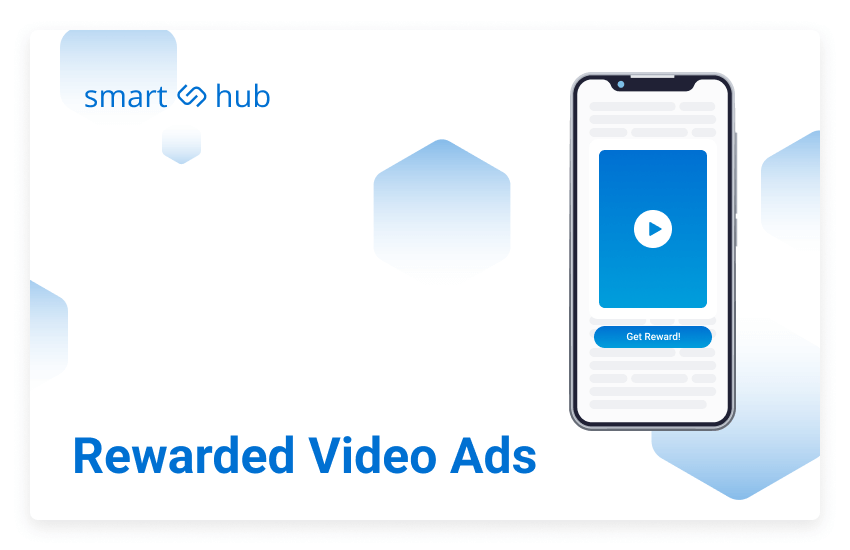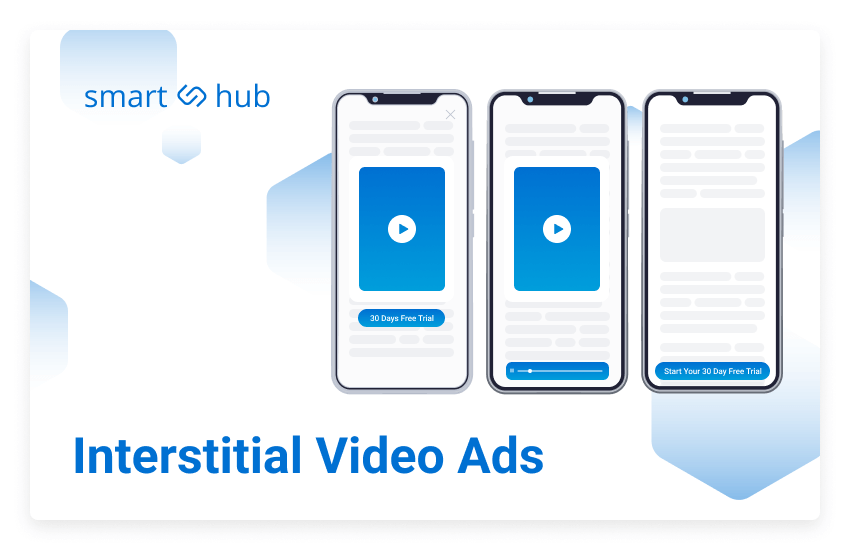Video Advertising Overview for 2024: Efficient Video Ads Types and Channels
 by Roman Vrublivskyi
by Roman Vrublivskyi
 by Roman Vrublivskyi
by Roman Vrublivskyi
Video advertising is getting more and more demand, and in 2024, the video ad spending is expected to exceed $190 billion. Moreover, the annual growth is forecasted to reach 6.04%, which means that the market share of video ads can surpass $241 billion by 2028.
The reason for this is straightforward. Video ads are more engaging than static advertisements, so they tend to have higher CTRs and are more effective in driving conversions. Additionally, they allow advertisers to deliver more valuable information to their audiences. Short product demonstrations, “how to” instructions, customer testimonials — this and other content can be created in the format of video ads, helping advertisers show their expertise and gain trust.
In this guide to digital video advertising, we will go through diverse video ad types and explore channels for launching such campaigns.
Firstly, let’s take a look at different types of video advertisements that are popular among both marketers and publishers.

Instream ads play within the already existing video content — most likely, you saw them on YouTube. They can be shown before the main video starts playing (pre-roll), during the video (middle-roll), and at the end of the clip (post-roll). Such ads can be skippable and non-skippable, but regardless of the selected option, more and more advertisers prioritize short video ads. According to Statista, spending on short-form videos is forecasted to reach almost $99.5 billion in 2024.

Outstream ads appear within non-video environments. For instance, advertisements can be shown within the editorial content (between the paragraphs), and this format is especially popular on websites that have a lot of text: articles, studies, and so on. Alternatively, ads can appear in the corner of the page and follow users while scrolling. Originally, outstream ads were available only for mobile devices, but now they can be seen on desktops, too.

Rewarded ads often become a part of the in-app content, and their concept is simple. A user opts in for an ad, watches a non-skippable clip, and gets a reward. This can be, for instance, virtual currency, extra life (in mobile games), or anything else app developers can offer within their product. Rewarded videos have high completion rates and are especially helpful for driving app installations. At the same time, web rewarded video ads are also entering the stage, becoming a more universal marketing tool.

Interstitial videos are ads completely covering the screen of an app or a website. Usually shown during transitions between the parts of the main content (for example, game levels), they can often be skipped after some time. This way, they are less intrusive but rather effective in terms of driving engagement, which is beneficial both for publishers and advertisers.
Video advertisements are not an innovation in 2024, but their ecosystem is evolving continuously. With the growing popularity of streaming services, both advertisers and publishers get new opportunities.
It is important to choose the relevant video distribution channels to get positive results for all sides of the media trading process: advertisers, publishers, and ad exchanges, or ad networks.
You may also like to learn what is the difference between ad network and ad exchange.
FAST TV, standing for free ad-supported streaming TV, works in a rather similar way as traditional TV, but over the Internet. The content is available for free, but users have to watch ads to access it. There are a lot of FAST streaming services offering both on-demand content and live channels, and many users prefer watching videos exactly in this way. For instance, in 2023, 57% of viewers favored FAST platforms (in the US). The reason for this is obvious — the content of FAST apps is free, while paid streaming services tend to increase their fees.
The term CTV (connected TV) refers not only to smart TVs with Internet connection but also to other devices like gaming consoles or adapters (e.g. Roku). However, the video ads themselves are still shown on the TV screen and delivered via a streaming service or app. Adopting CTV advertising can be beneficial for marketers, as the number of CTV users keeps growing. For example, among millennials in the US, this number is expected to exceed $62.5 million by 2025. And in 2023, 88% of households (again, in the US) owned at least one Internet-connected TV device. One more fact to mention here is that CTV ad spending in video advertising is forecasted to reach almost $34.5 billion in 2024.
While CTV devices are devices connected to the Internet, OTT (over-the-top) is the method of delivering streaming content (for instance, services like Netflix or Amazon Prime Video). Thus, OTT content can be watched not only on connected TVs, but also on smartphones, laptops, and other devices. Therefore, OTT advertising is more flexible, although its meaning is pretty similar to CTV — delivering ads via streaming services.
Being an owner of an ad exchange implies ensuring efficiency for your SSP (a type of programmatic software for publishers to facilitate sales of their advertising impressions) and DSP (a type of programmatic software that allows an advertiser to buy advertising with the help of automation) partners — this is your way to drive stable media trading income. You need to provide publishers and advertisers with a diversity of ad formats and channels. At the same time, it is crucial to match DSP and SSP partners correctly, to guarantee relevant traffic.
Building such functionalities from scratch is usually expensive and time-consuming, but there is an alternative. The SmartHub white-label ad exchange is already equipped with online video advertising functionality. The platform supports a range of ad formats: instream, outstream, and rewarded ads, while the list of channels includes CTV, in-app, desktop, and mobile web.
Other formats, like banner, native, and other ads, are available as well, and by setting up endpoints, you can match SSP and DSP partners effectively.
With SmartHub, you get your own ad exchange within a week or a bit more, depending on your needs. In case you require a specific feature that is not available at the moment, contact the SmartHub team to discuss this and get a customized solution.
Being more appealing and engaging, video ads help advertisers drive traffic and conversions. Besides, they are often more expensive than other ad formats, which means that publishers delivering them can earn more.
Explore 10 TOP strategies for traffic monetization with programmatic advertising.
The popularity of video ads provides ad exchange owners with an opportunity to increase media trading income. Therefore, it is essential for you to try out different types of targeting and offer multiple video ad formats and channels on your ad exchange platform. Keep in mind that utilizing a white-label solution can speed up this process significantly. Instead of developing everything from scratch, you only customize a ready-made platform.
At the same time, it is essential to keep an eye on technology evolution. New video formats may enter the stage, and if this happens, you should be aware of this. Currently, instream, outstream, rewarded, and interstitial ads are among the most popular formats. However, this can change, so follow up on new video ad formats to stay on top.
Does SmartHub white-label ad exchange seem like the way to go? Learn more here!
Want to Learn More?
Want to Learn More?
We'll get back to you very soon.